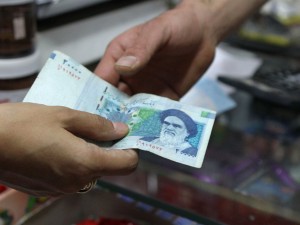 The New York Times reported on Saturday that , according to administration officials, Iran and the U.S. “have agreed in principle” to meet for bilateral negotiations over Iran’s nuclear program after the election.
The New York Times reported on Saturday that , according to administration officials, Iran and the U.S. “have agreed in principle” to meet for bilateral negotiations over Iran’s nuclear program after the election.
Both sides have denied such an agreement, though a U.S. spokesman noted, “”We continue to work with the P5+1 on a diplomatic solution and have said from the outset that we would be prepared to meet bilaterally.”
Whether there is some truth in the report or whether it was simply a leak to stir up controversy in advance of the foreign policy debate remains unclear. Whatever the case, the prospect of direct negotiations should encourage a fact-based discussion of U.S. policy options for preventing a nuclear-armed Iran.
Opponents of diplomatic discussions argue that negotiation is a ploy by the Iranians to gain more time in developing a nuclear arsenal. As negotiations progress, critics say, valuable time for planning for a military strike is lost while Iran moves closer to a nuclear weapons capability.
This line of reasoning overlooks the fact that military action against Iran would have substantial costs. Taking such a step before exploring our non-military options would be a strategic mistake.
There is considerable evidence that the window for a diplomatic solution to the Iran nuclear crisis is still open. Iran has recently seen violent protests over its struggling economy. The rial recently fell by 25 percent over two days, showing that international sanctions on Iran are clearly having an economic effect that might be figuring into the regime’s political calculus.
A carrots and sticks approach is the best policy to achieve a lasting solution to this problem. “Sticks” includes keeping the military option on the table and maintaining economic pressure. “Carrots” means allowing for the gradual lifting of sanctions.
This policy of engagement and economic pressure will not likely yield a quick or easy solution to the Iran nuclear question. However, the sanctions imposed by a strong international coalition determined to prevent a nuclear-armed Iran have opened a window for negotiations to work.
Bilateral discussions could be a useful complement to the P5+1 negotiations, allowing both the U.S. and Iran some flexibility. Whether one-on-one talks pan out or not, it makes sense to take advantage of the opportunity created by economic pressure, continuing to build the international coalition for a non-military solution.


